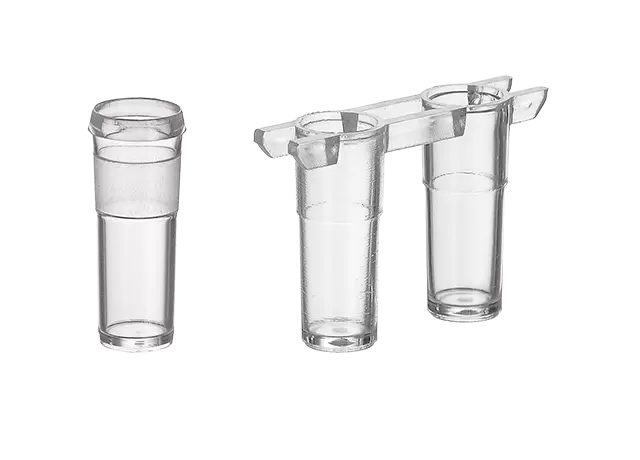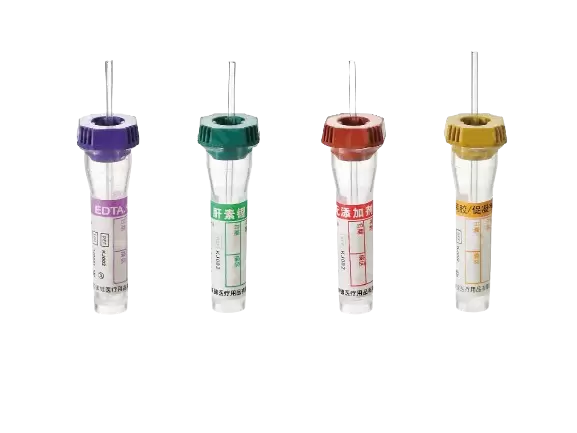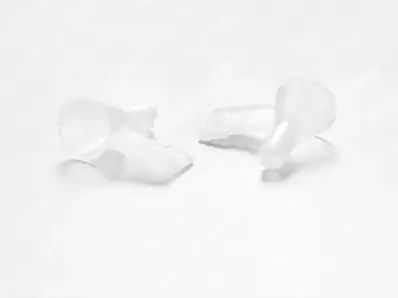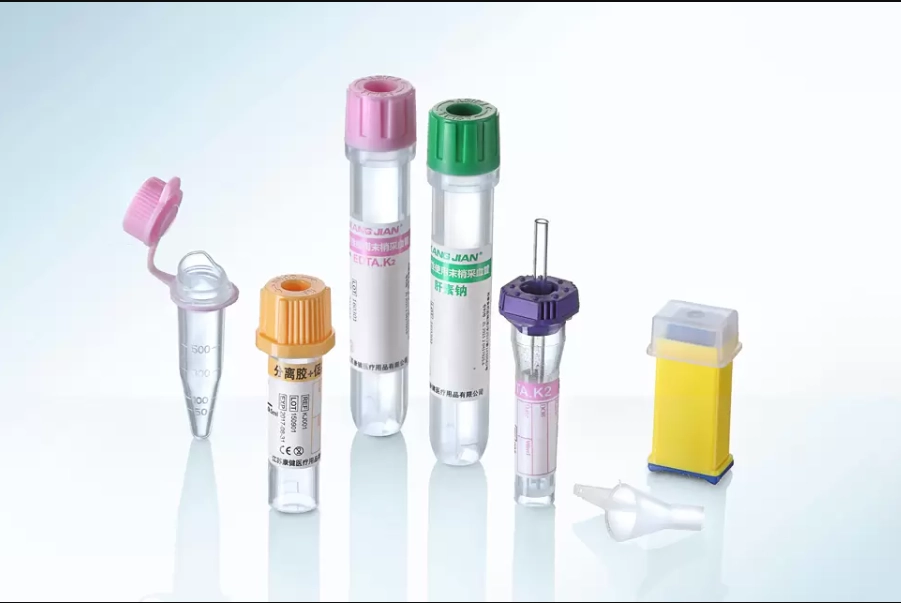Maximizing Accuracy: How Disposable Cuvettes Transform Laboratory Testing
In laboratory environments, accurate measurements are paramount to ensuring the reliability of test results. One of the most essential tools for many optical measurements is the disposable cuvette. These small, simple, and yet indispensable items have become standard in laboratories worldwide. Whether it's in clinical diagnostics, pharmaceutical research, environmental testing, or even quality control in the food and beverage industry, disposable cuvettes provide a clean, cost-effective solution for sample analysis. In this article, Kangjian explores the diverse applications of disposable cuvettes in laboratories and discuss the key considerations when selecting the right cuvette for your specific needs.

Applications of Disposable Cuvettes in Laboratories
1. Spectrophotometry
Spectrophotometry is one of the most common and vital techniques used in laboratories for analyzing substances based on their absorption or transmission of light. A disposable cuvette is an essential tool in spectrophotometry, as it is used to hold liquid or solid samples for the spectrophotometer to analyze. The device directs light through the sample in the cuvette, and a detector measures the amount of light absorbed or transmitted. This data allows researchers to quantify concentrations of various substances such as proteins, nucleic acids, chemicals, and other compounds present in the sample.Using disposable cuvettes ensures that there is no cross-contamination between samples, which is crucial for obtaining reliable and accurate results. Since they are disposed of after each use, laboratories avoid the tedious cleaning process, maintaining the integrity of each measurement. This makes disposable cuvettes not only cost-effective but also a convenient and reliable tool in spectrophotometric analysis.
2. Clinical Diagnostics
In clinical laboratories, accuracy and contamination-free testing are critical for diagnosing medical conditions and providing patient care. Disposable cuvettes play an essential role in clinical diagnostics by providing a fresh and uncontaminated container for each test. This is particularly crucial when conducting tests such as enzyme assays, blood testing, glucose monitoring, and other diagnostic procedures.
The use of disposable cuvettes eliminates the risk of cross-contamination between different patient samples, which is vital in preventing inaccurate results. Moreover, because they are designed for single use, disposable cuvettes reduce the chances of introducing external variables into the test, ensuring more precise measurements. Their affordability, combined with their ability to prevent contamination, makes them indispensable in high-volume diagnostic settings.
3. Pharmaceutical Research
Pharmaceutical research involves a wide range of experiments, from drug formulation development to quality control, clinical trials, and pharmacokinetic studies. In these research environments, disposable cuvettes are commonly used due to their cost-effectiveness and the ease with which they can be discarded after use. In high-throughput screening—where large numbers of compounds are tested for various characteristics—the use of disposable cuvettes helps prevent cross-contamination between samples, ensuring the accuracy and reproducibility of results.In addition to their practical advantages, disposable cuvettes are ideal for maintaining the integrity of experiments in pharmaceutical labs, especially when dealing with hazardous or reactive substances. Researchers benefit from the convenience of having a new, clean container for every sample, which is essential when studying compounds that could be altered or contaminated by residues from previous tests.
4. Environmental Testing
Environmental testing is essential in monitoring and maintaining the health of ecosystems, including the quality of air, water, and soil. Disposable cuvettes are a valuable tool in these applications, particularly in assessing environmental factors like turbidity, chemical contaminants, and nutrient levels. In water testing, for example, a disposable cuvette is used to hold the sample before measurement by a spectrophotometer, ensuring that the sample's composition remains unchanged and uncontaminated.The simplicity and low cost of disposable cuvettes make them ideal for use in environmental testing, where high accuracy and repeatability are crucial. Whether testing water for pollutants or soil for nutrient levels, disposable cuvettes provide an efficient and reliable means of conducting tests while avoiding the cross-contamination risks associated with reusable containers.
5. Food and Beverage Industry
In the food and beverage industry, the consistency and quality of products are of paramount importance to ensure they meet regulatory standards and consumer expectations. Disposable cuvettes are commonly used in quality control processes to test product purity, ingredient concentration, and overall quality.For example, in beverage production, disposable cuvettes can be used to measure the concentration of sugar, alcohol, or preservatives in samples. Similarly, they are employed to check the purity of food products, ensuring that they meet food safety and regulatory guidelines. By using disposable cuvettes, manufacturers can quickly and accurately assess product quality without worrying about cross-contamination or sample contamination. These cuvettes also help maintain the integrity of measurements by ensuring that each test is performed using a clean, new cuvette, making them a key part of maintaining high standards in the food and beverage industry.
Considerations When Choosing Disposable Cuvettes
When selecting disposable cuvettes for your laboratory, there are several important factors to consider:
1.Material Compatibility
When choosing a disposable cuvette, material compatibility is one of the most critical factors to consider. The material must be compatible with the sample being tested to avoid interference with the results. For instance, when conducting UV measurements, disposable cuvettes made of quartz are the best option. Quartz cuvettes offer superior optical clarity and can withstand the high-energy UV light without any significant distortion, ensuring accurate results across a wider range of wavelengths.
For standard visible light measurements, plastic disposable cuvettes are often sufficient. These cuvettes are not only affordable but also durable and versatile for many routine tests. However, it is important to note that plastic cuvettes have limitations in UV measurements, as they can absorb light in the UV range, which may affect the accuracy of the readings. By carefully selecting a disposable cuvette made from the right material, you can ensure that your experiment yields reliable and accurate results.
2. Path Length
The path length of a disposable cuvette refers to the distance the light travels through the sample, typically measured in centimeters. The standard path length for most cuvettes is 1 cm, but for specific applications, you may need cuvettes with different path lengths. The path length plays a crucial role in determining the sensitivity and accuracy of absorbance measurements.
For example, shorter path lengths can be useful for highly concentrated samples, as they prevent the light from being too absorbed by the sample. On the other hand, longer path lengths are ideal for dilute samples, where they allow for more accurate readings by increasing the light interaction with the sample. When selecting a disposable cuvette, ensure that the path length matches the requirements of your analysis to obtain optimal results.
3. Volume Requirements
Another essential consideration when choosing disposable cuvettes is the volume of the sample you need to measure. For some experiments, only a small amount of the sample is required. In such cases, micro-volume disposable cuvettes are the perfect solution. These cuvettes allow you to perform accurate measurements with limited sample volumes, making them an excellent choice for precious or costly samples.
Micro-volume disposable cuvettes typically require less than 100 µL of sample and are designed to ensure that even small quantities provide accurate and reliable results. Choosing the correct volume capacity for your disposable cuvette will help optimize both the efficiency and effectiveness of your testing process, preventing sample waste and minimizing the cost of experiments.
4. Optical Properties
The optical properties of a disposable cuvette are crucial to ensuring precise measurements in your analysis. These properties include the cuvette's transparency and its resistance to distortion when exposed to light. A disposable cuvette with poor optical properties can result in inaccurate readings, as any distortion or opacity could interfere with the light passing through the sample.
To guarantee accurate absorbance measurements, select disposable cuvettes made from high-quality materials with excellent optical clarity. High-quality cuvettes ensure that the light passing through the sample is not absorbed or scattered by the cuvette material itself, thus providing the most reliable data. Additionally, some disposable cuvettes are designed with UV resistance or anti-static coatings to minimize external interference, which enhances their optical performance and prevents data loss during testing.
In conclusion, disposable cuvettes are indispensable in a wide range of laboratory applications. Their versatility and reliability ensure that accurate and precise measurements are obtained, while also preventing cross-contamination and reducing the time spent on cleaning reusable containers. Whether you're conducting complex research in pharmaceutical labs, performing routine clinical diagnostics, or ensuring the quality of food and beverage products, disposable cuvettes contribute significantly to the efficiency and accuracy of testing processes. By understanding the important factors such as material compatibility, path length, volume requirements, and optical properties, laboratories can make informed decisions when selecting disposable cuvettes, ultimately ensuring the success of their analyses.




